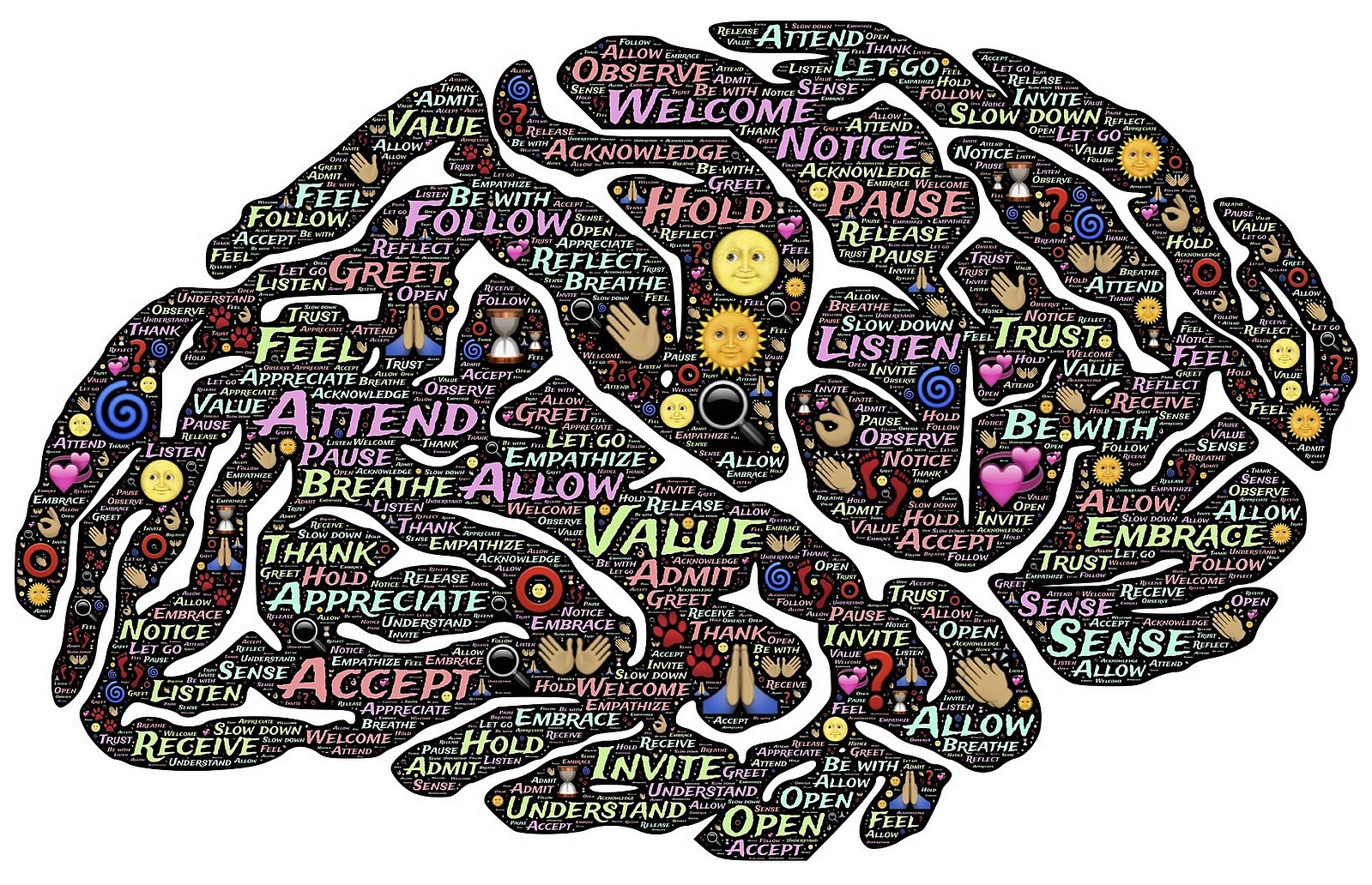Difference Between Mindfulness and Transcendental Meditation
Both mindfulness and transcendental meditation involve deeper awareness, breathing, and concentration. They have also been studied to improve psychological and physical wellbeing. Particularly, mindfulness is a state of moment-to-moment awareness of your experience without judgment while transcendental meditation transcends the ordinary thinking process and aims to achieve stability, rest, and perfect absence of mental boundaries. The following discussions further delve into their differences.

What is Mindfulness?
Mindfulness is a state of moment-to-moment awareness of your experience without judgment. It can be promoted by several activities such as yoga and tai-chi but most of the literature focus on mindfulness meditation which consists of self-regulated practices that aim to train attention and awareness. Mindfulness meditation seeks to cultivate general mental well-being and develop serenity, clarity, concentration, and similar capacities. The empirically supported benefits of mindfulness include reducing rumination, stress reduction, and improving memory, focus, calmness, cognitive flexibility, and relationship satisfaction (American Psychological Association, 2021).
Regarding its origin, mindfulness has been practiced for thousands of years; commentators argue that its history should not only be limited to Buddhism and Hinduism since it also can be traced back to Islam, Judaism, and Christianity. Most Western mindfulness practitioners learned from the Buddhist and Hindu tradition. One of the biggest influences was Jon Kabat-Zinn who developed the Mindfulness-Based Stress Reduction program and founded the Oasis Institute for Mindfulness-Based Professional Education and Training Center for Mindfulness and the Center for Mindfulness in 1979 at the University of Massachusetts Medical School (Selva, 2021).
According to Kabat-Zinn, the seven pillars of mindfulness are (Villanueva, 2014):
- Trust
It is better to trust our own intuition, experience, and feelings. This way, we are taking responsibility for ourselves, learning to listen to our own being, and become more fully ourselves.
- Non-judging
Having a non-judging habit helps in finding peace within us. Mindfulness teaches practitioners to recognize when they are judging and to assume impartiality and simply observe what arises.
- Non-striving
The goal of mindfulness meditation is simply to be ourselves since we embrace our moment-to-moment experiences. There is no pressure to do anything with it.
- Letting Go
Trying our best to be free of attachment helps us to be more connected with the present. Mindfulness is also instrumental in learning more about what we are holding on to.
- Acceptance
Having the attitude of acceptance welcomes positive changes and paves way for clarity. If we see things as they are, we can better realize what to do in our current situation.
- Beginner’s Mind
To be able to see things as if seeing them for the first time helps us appreciate the fullness of our existence. This kind of attitude is fundamental in being trapped in the rut of our past experiences and expectations.
- Patience
Being able to wait and understand that we cannot dictate when certain processes or results will happen leads to a richer wisdom regarding our experiences.
One of the guides in practicing mindfulness meditation specify the following steps (Roy, 2021):
- Inhale deeply and relax as you exhale
- Let go of all your worries
- Be aware of your breathing
- Slowly count your breaths then repeat
- Be deeply immersed in your breathing process
- Guide back your wandering thoughts
- Keep settling deeper into a peaceful awareness

What is Transcendental Meditation?
Transcendental Meditation or TM seeks to promote a state of relaxed awareness, avoid distracting thoughts, and achieve pure consciousness. The meditator transcends the ordinary thinking process and experiences stability, rest, and perfect absence of mental boundaries (Ansorge, 2020). In this technique, practitioners mentally repeat a mantra (special Sanskrit word or phrase) which seeks to achieve bodily calm and inner peace (Melton, 2020). The benefits of TM include reducing anxiety, stress, blood pressure, depression, attention-deficit disorder symptoms, and life dissatisfaction (Scott, 2020).
TM was taught by Swami Brahmananda Saraswati (also known as Guru Dev), a Hindu monk. In the 1950s, this kind of meditation was internationally promoted by the Maharishi Mahesh Yogi who was one of Saraswati’s disciples and coined the term “Transcendental Meditation”. The practice of TM became increasingly popular when the Beatles and other celebrities joined the Maharishi’s following (Melton, 2021).
TM’s basic practice involves getting into a comfortable position while relaxedly breathing from the diaphragm. The meditator practices his ability to notice his thoughts without entertaining them and then silently repeats a mantra while focusing on arising sensations. It is recommended for it to be practiced 15 to 20 minutes two times a day (Scott, 2020).
Difference between Mindfulness and Transcendental Meditation
Definition
Mindfulness is a state of moment-to-moment awareness of your experience without judgment. It can be promoted by several activities such as yoga and tai-chi but most of the literature focus on mindfulness meditation which consists of self-regulated practices that aim to train attention and awareness. Mindfulness meditation seeks to cultivate general mental well-being and develop serenity, clarity, concentration, and similar capacities (American Psychological Association, 2021). In comparison, transcendental meditation or TM seeks to promote a state of relaxed awareness, avoid distracting thoughts, and achieve pure consciousness. The meditator transcends the ordinary thinking process and experiences stability, rest, and perfect absence of mental boundaries (Ansorge, 2020).
History
Regarding its origin, mindfulness has been practiced for thousands of years; commentators argue that its history should not only be limited to Buddhism and Hinduism since it also can be traced back to Islam, Judaism, and Christianity. Most Western mindfulness practitioners learned from the Buddhist and Hindu tradition. One of the biggest influences was Jon Kabat-Zinn who developed the Mindfulness-Based Stress Reduction program and founded the Oasis Institute for Mindfulness-Based Professional Education and Training Center for Mindfulness and the Center for Mindfulness at the University of Massachusetts Medical School in 1979 (Selva, 2021). As for TM, it was taught by Swami Brahmananda Saraswati (also known as Guru Dev), a Hindu monk. In the 1950s, this kind of meditation was internationally promoted by the Maharishi Mahesh Yogi who was one of Saraswati’s disciples and coined the term “Transcendental Meditation” (Melton, 2021).
Basic Practice
One of the guides in practicing mindfulness meditation specify the following steps (Roy, 2021): inhale deeply and relax as you exhale, let go of all your worries, be aware of your breathing, slowly count your breaths then repeat, be deeply immersed in your breathing process, guide back wandering thoughts, and keep settling deeper into a peaceful awareness. On the other hand, TM’s basic practice involves getting into a comfortable position while relaxedly breathing from the diaphragm. The meditator practices his ability to notice his thoughts without entertaining them and then silently repeats a mantra while focusing on arising sensations. It is recommended for it to be practiced 15 to 20 minutes two times a day (Scott, 2020).
Mindfulness vs Transcendental Meditation

Frequently Asked Questions:
Can you do TM and mindfulness?
There are differing opinions; some say it’s better to focus on only one technique; however, according to “The Meditation Trust”, mindfulness is one of the effects of TM and many individuals want to learn TM after having learned mindfulness to deepen their practice. Also, it is recommended to be eclectic; picking and choosing different elements to create a practice that works for you (Schultz, 2020).
Is TM better than other forms of meditation?
The answer varies. Some of the identified advantages as compared to other meditations include deeper physiological rest and an overall positive impact on both mind and body. One opined that you are doing the right thing as long as you are improving on working your health (Astorino, 2019).
Is Zen meditation the same as mindfulness?
Though they both focus on the presence of mind; however, mindfulness focuses on a particular object while Zen meditation involves general awareness (Morin, 2021).
What is a TM mantra?
In this technique, practitioners mentally repeat a mantra (special Sanskrit word or phrase) which seeks to achieve bodily calm and inner peace (Melton, 2020).
Does TM help with anxiety?
Yes, some studies have found that regular practice of TM can help reduce anxiety (Ansorge, 2020).
Why is TM so expensive?
TM is taught in a standardized seven-step course in person by a certified teacher, you cannot simply learn it from a book or a video. It is said to be secretive since it is a tradition to keep your mantra a secrete and that it becomes a very intimate part of daily practice (Runyon, 2021).
What are examples of TM mantras?
- Em
- Ema
- Hirim
- Ainga
- Shama
What are some good mantras?
- Om : Regarding ease, this is the most popular. It is believed that is the sound that the universe emits.
- Ram and Shiriram: Men recite ram while women recite shiriram; these sounds are meant to refresh minds and enhance productivity.
- There is a list of mantra for different age groups. For instance, ieng (18-19), iem (20-21), ienga (22-23), etc.
Summary
- Mindfulness is a state of moment-to-moment awareness of your experience without judgment. In comparison, transcendental meditation or TM seeks to promote a state of relaxed awareness, avoid distracting thoughts, and achieve pure consciousness.
- Regarding mindfulness, one of the biggest influences was Jon Kabat-Zinn while TM was internationally promoted by the Maharishi Mahesh Yogi.
- Practicing mindfulness meditation involves being deeply immersed in your breathing process and settling deeper into a peaceful awareness.
- TM’s basic practice involves noticing your thoughts without entertaining them and then silently repeating a mantra while focusing on arising sensations.
- Difference Between Hematoma and Melanoma - February 9, 2023
- Difference Between Bruising and Necrosis - February 8, 2023
- Difference Between Brain Hematoma and Brain Hemorrhage - February 8, 2023
Search DifferenceBetween.net :
Leave a Response
References :
[0]American Psychological Association (2021). What are the benefits of mindfulness. https://www.apa.org/monitor/2012/07-08/ce-corner
[1]Astorino, D. (2019). What’s the deal with transcendental meditation? Shape. https://www.shape.com/lifestyle/mind-and-body/what-is-transcendental-meditation
[2]Runyon, J. (2021). How to learn transcendental meditation. https://how.co/ht/how-to-learn-transcendental-meditation-76310/
[3]Selva, J. (2021). History of mindfulness: From east to west and religion to science. Positive Psychology. https://positivepsychology.com/history-of-mindfulness/
[4]Image credit: https://pixabay.com/photos/meditation-reflection-woman-person-473753/
[5]Image credit: https://commons.wikimedia.org/wiki/File:Mindfulness_brain.jpg
